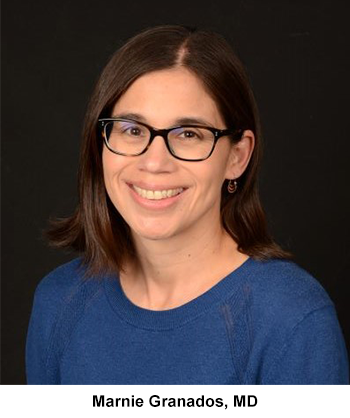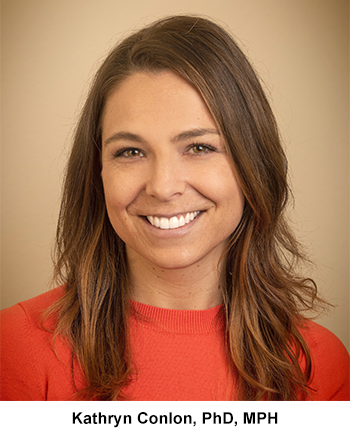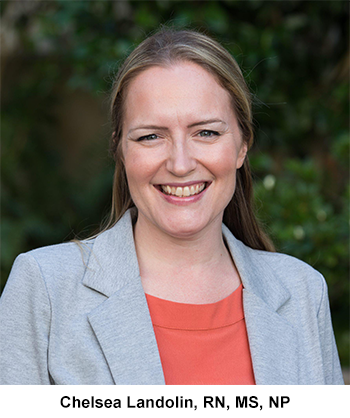By Dorsey Griffith
Contributing Writer
For too long health care providers have left environmental concerns to other disciplines. That’s the consensus of various California experts concerned about the intersection of climate change and human health. In fact, they argue, clinicians are in an excellent position to address the impacts for their patients, as well as tackling the environmental footprint of the health care systems in which they work.
“There is a growing recognition among health professionals that climate change is a health issue,” said Marnie Granados, MD, a pediatrician at Children’s Hospital of Orange County (CHOC). “We are realizing that if we care about the health of our patients, we have to care about climate change.”
The calls for action seem even more urgent this summer, after hundreds of people died in June during the record-setting heat wave in the Pacific Northwest and wildfire season started early in California with fires raging up and down the state. A study of 732 sites on six continents published in Nature Climate Change found that 37 percent of all heat-related deaths can be pinned directly on climate change.
The Impacts of Climate Change
Extreme heat, hurricanes, wildfires, floods, drought, and other environmental disasters caused or exacerbated by climate change are on the rise.
“There is a growing amount of research that with climate change there is an increase in the number of extreme weather events,” said Kathryn Conlon, PhD, MPH, in the UC Davis School of Medicine, Department of Public Health Sciences and the School of Veterinary Medicine. “These look like heat waves, hot temperatures over a period of time, an increasing number of floods, longer, more frequent droughts and a higher number of dangerous storms.”
Extreme weather events, which in California include excessive heat, wildfires, drought and flooding, can in turn cause immediate and long-term health effects.
“Every summer now we are choking on wildfire smoke,” said Chelsea Landolin, RN, MS, NP of the UCSF School of Nursing. “It is far worse if you have a condition like asthma or another respiratory disease like COPD.”
Floods can cause injuries from storm debris as well as drowning, contaminated water and food, added Conlon. Contaminated water can lead to a spike in diarrheal disease. With increasing hot temperatures and droughts, mosquito- and tick-borne illnesses can surge, too. 
And climate change is a “risk magnifier” for vulnerable populations, both in terms of physical and mental health, Landolin said.
“It’s the people who are already the most disadvantaged in our society who tend to bear the weight of climate change,” she said. “The people living in areas that have no tree cover compared to more resourced areas tend to get hotter, which is called the heat island effect. It’s more challenging for these folks to access air conditioning and good air filtration, which makes it worse during wildfire season. These areas already suffer from a greater prevalence of respiratory disorders and have more limited access to health care and insurance.”
Others at high risk are people who work outdoors, including the people who grow our food.
“Our farmworkers, especially in California, have an unfair exposure profile because physical labor is very demanding on the cardiovascular system and they are doing it for a long time, often in areas where they don’t have easy access to water, breaks or shade, and are more likely to succumb to a heat event,” said Conlon, whose research focuses on how climate change influences human, animal and environmental health. “Ag workers also are exposed to pesticides, dust or particulates, even fungal diseases like Valley Fever.” 
Children are at particular risk because of increases in air pollution, especially particulate matter associated with wildfires, said Olga Guijon, MD, FAAP, associate medical director for the asthma outreach program at CHOC. Families living near freeways or factories face higher risk, as do those crowded together in small apartments who may be exposed to dust mites, cockroaches or molds.
Supporting Patients Facing Health Impacts of Climate Change
Because so many vulnerable families have difficulty accessing pediatric asthma care, CHOC has a mobile asthma van program, which brings asthma care to more than 20 community and school sites in Orange County.
“Our emphasis is on educating the community, patients and providers on the best practices for using inhalers,” said Guijon. “Most patients don’t understand asthma or how to use inhalers appropriately. They end up in the emergency room with asthma attacks, missing school and their parents missing work.”
Health care providers have many opportunities to educate their patients to mitigate environmental exposures and prevent or reduce the downstream health effects, said Conlon.
“There are very bite-sized ways that practitioners can talk to their patients about how a changing climate will impact their health,” she said. “You don’t have to understand how to explain climate change.”
Older patients can be advised about how hotter temperatures can exacerbate breathing problems or the importance of getting enough hydration to prevent renal crises. During wildfire season, providers can remind asthmatic patients to keep track of their rescue inhaler or to stay indoors with filtered air if it’s smoky and hot outside. Providers can ask patients if they have a support network in case of a climate-related disaster.
“Having a conversation will be very powerful, especially from a trusted source like a nurse,” she said.
Granados acknowledged that much of this is brand new for providers, most of whom were never educated on how to address the health effects of climate change during their professional training.
“Our patients are facing new challenges and threats, and we need to tailor our guidance in a way that recognizes that we are living in a hotter world with more extreme weather,” she said. “That means talking about heat stress and coming up with a heat plan for families. It also means talking about air quality and coming up with a wildfire safety plan.”
The Provider Role in Sustainable Health Care Systems
Beyond patient concerns, health care providers also can work to reduce emissions that contribute to global warming.
“The health care industry accounts for some 18 percent of our economy,” Conlon said. “Hospitals produce a lot of greenhouse gases. We need a lot of energy to run an OR and keep an ED open. We need our EMS and firefighters to be able to get them where they are going. Those models are dependent on fossil fuels, and these emissions are the root cause of climate change.”
Fortunately, she said, many large medical centers and hospitals are beginning to talk about making their buildings carbon neutral and educating their workforce about the issues.
Landolin, a parent of two young children, said she got involved because she wants to be able to tell her kids that “even if I wasn’t able to avert climate change myself, I was in the fight.”
At UCSF, Landolin is Chair of the Academic Senate Committee on Sustainability. UCSF has formed a partnership with Stanford University to offer an annual symposium that engages students, faculty and high-level leadership to increase commitment to climate education and action. The group is growing to include UC Davis, and Landolin hopes the effort eventually will be UC-wide.
“Student efforts have resulted in substantial reductions in the purchase of beef and lamb, major contributors to global warming, across the campus and at events,” she said. “And our committee advocated for divestment in fossil fuels at the UC-wide level, and we were successful. There are major things we can achieve.”
Building climate change and health into medical and nursing education is critical too, the providers said. Conlon teaches an online program for providers through Yale University School of Public Health focused on climate and health adaptation.
Granados added that the American Academy of Pediatrics and other organizations also offer numerous educational resources on the intersection of climate change and health.
“I would encourage health care providers who are interested to look to their professional organizations for educational opportunities,” she said. “If they don’t exist, take the lead and create those opportunities.”